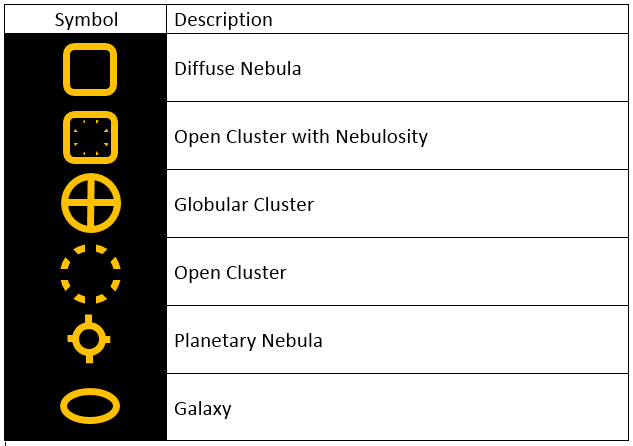Distant Nature: Astronomy Exercises
Objectives
Before we can discuss most of the concepts of observational astronomy, we must learn how to use a star chart. This will ultimately lead the ability to look up in the night sky, identify stars, constellations, planets, etc.
Equipment/Materials Needed
Stellarium
Subject Introduction
Humans have mapped the sky in one form or another for thousands of years. The sky was seen as a celestial sphere of stars in fixed relative locations, with the only exceptions being the “wanderers” Mercury, Venus, Mars, Jupiter, Saturn, the Moon and the Sun.
- Stars
In modern times we have settled upon star maps, or star charts, which section the sky into 88 constellations, with Latin names. The stars are also identified, first with names (from many cultures). Over time, with the invention of the telescope and better instruments, we have identified an ever increasing number of stars and other naming systems have been adopted to catalog them. Also, objects either not seen or not understood in ancient times, have been identified and are referred to with names and/or catalog ids. Today we are fortunate to have personal computers and very accurate software to display star charts, not just for the seemingly fixed stars and deep sky objects, but to display these charts over past and future times and including planets, the Sun and Moon, asteroids, comets, etc. While there is no substitute for being outside in clear dark conditions, planetarium software provides us with access to the virtual sky at our convenience and with helpful information.
Star identifiers have changed over the centuries. In the beginning the brighter stars were given names. Stars like Betelgeuse, Deneb, Polaris and Sirius were how these objects were referred to. Once we became able to see more and more stars, an identification system known as the Bayer Designation was used. In this system, the star is named using a Greek letter followed by the three letter abbreviation for the constellation in which it appears. The Greek letter is determined by the order of brightness of the stars in that constellation. The brightest is α (alpha), the second brightest is β (beta) and so on (e.g. Antares is α Sco). Soon this system was insufficient, and the Flamsteed numbers were adopted. Here a number is substituted for the Greek letter, with 1 (one) being the brightest, etc. Today, one of the most widely used star catalogs is the Hipparchus catalog. The stars are designated as HIP xxxxx, where the xxxxx is the number of the star. The constellation reference is not included in this catalog.
In Stellarium, stars are denoted by their name (if named), the Bayer Designation (if bright enough) and always the Hipparchus catalog number. The table below gives some examples of star naming conventions.
Star Designations

Table 1.
- Solar System Objects
Solar system objects, planets, the Sun and Moon, comets, asteroids and dwarf planets are designated by their names. These objects are all under the gravitational influence of the Sun.
- Deep Sky Objects
Deep sky objects are those objects which are not stars and not members of our solar system. These include, nebulae, star clusters and galaxies. To designate these objects, again various catalogs have developed over time, as our ability to see fainter objects has improved. The most widely known of these is the Messier catalog. Developed by Charles Messier in the 18th century, this catalog contains the relatively bright objects which were able to be seen at that time. Many of the objects were discovered by Messier, other contributed their discoveries to his catalog. Objects are designated as M1 through M110. Along with the Messier catalog, most star charts use a couple of additional catalogs 1) New General Catalog (NGCxxxx) and the 2) I Catalog (ICxxxx). Each of these catalogs contains a mix of all of the types of deep sky objects. Table 2 Includes some examples, Table 3 contains the symbols used for deep sky objects in Stellarium.
Deep Sky Objects

Table 2.

Deep Sky Symbols
Table 3.